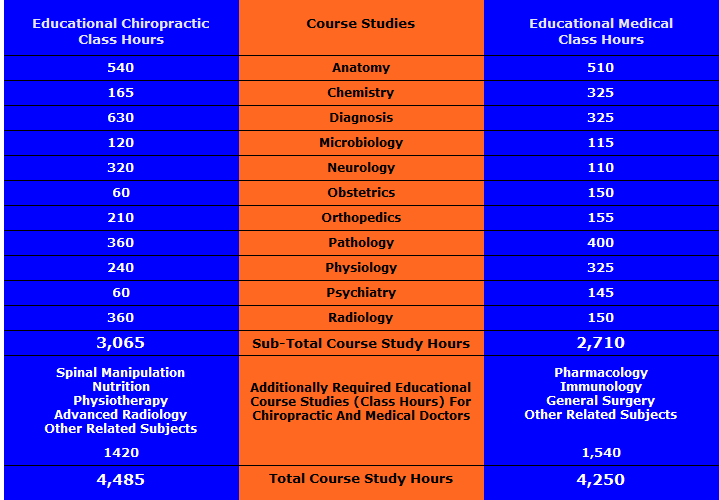



Excited and Happy Graduates!
Chiropractic Education
Have you ever wondered how much education a chiropractic doctor is required to have in order to graduate and enter the profession? It is often assumed that chiropractors have a lower amount of educational training than other diagnostic health care providers, but nothing could be further from the truth. In fact, the educational requirements for doctors of chiropractic are among the most stringent of any of the health care professions. Most people are surprised when they learn that chiropractic students endure four years of post graduate professional education and training that closely mirrors that required of medical students. An examination of the facts reveals that the distinctions between the two, and there certainly are many, are not quite as great as many people suppose.
Similar to the requirements of medical and dental schools, prior to entering Chiropractic College, prospective students must first successfully complete two to four years of pre-medical undergraduate studies. During this time there is an importance placed on the basic science studies including general chemistry, organic chemistry, physics, biology and psychology. Upon completion of these studies those students who are accepted into a chiropractic college enter an extensive four to five year academic program. As is the case with all diagnostic health care providers, the education received by chiropractors is necessarily thorough and demanding.
Chiropractic college course work includes an in-depth study of anatomy, physiology, pathology, neurology, radiology, biomechanics, spinal adjustive techniques and a wide variety of other health science subjects. Future doctors of chiropractic receive extensive teaching and practical knowledge in human bio-mechanics, structure and function, disease processes and clinical case management. Naturally, special emphasis is placed on the treatment and management of spinal disorders along with their role in the overall health and wellness of an individual. It is important to note that chiropractic students also receive thorough training aimed at identifying conditions which are beyond the chiropractic scope of practice that would require immediate outside medical or emergency referral.
Before graduating from their professional academic program, chiropractic students must also successfully complete and pass three National Board examinations to be eligible for licensure to practice in the United States. Many states also require an additional fourth rigorous three day National Board practical exam that focuses on x-ray interpretation and diagnosis, chiropractic technique and clinical case management. The purpose of the National Board of Chiropractic Examiners is to establish and maintain uniform high standards of excellence in the chiropractic profession, chiropractic education and ultimately patient care.
In addition to board testing, chiropractic students must spend several hundred hours of internship in which they treat patients suffering from true health ailments while under a professionally licensed doctors supervision. Some schools actually begin introducing and training students to the clinical setting in just their second year of studies. This ensures that the graduating doctors of chiropractic will have all the necessary education, skills and clinical experience to provide exceptionally safe and effective chiropractic health care. Many chiropractic colleges have employed additional externship programs in which student interns assist field doctors in their private practices prior to graduation.
Chart is based upon data compiled in 1995 by Merideth Gonyea, PhD for the Centers for Studies in Health Policy, Incorporated
The Comparison Between Chiropractic Education And Medical Education


Upon graduation and the passing of all national board exams, the Doctor of Chiropractic must then apply for licensure in the state they wish to practice in. All states have different standards required to attain and continually renew a valid license to practice chiropractic. Once licensed, most states require the doctor of chiropractic to complete continuing education hours to ensure the highest level of competency and keep their technical skills sharp and as current as possible. Failure to do so ultimately results in the revocation of the doctor's license to practice. Some states, such as Illinois, require as many as fifty hours of continuing education per year, to maintain the ability to practice as a chiropractor.
Many doctors further their knowledge and skills by completing additional studies after graduation. These one to three year programs provide the information to place the doctors at the top of the health care field in specific areas. Some of the areas of study include orthopedics, neurology, radiology, sports, rehabilitation, nutrition, pediatrics and research. As you can see, chiropractors are highly educated and trained health care professionals dedicated to providing superior chiropractic care and service.





POSTED PROVISIONS


PARENT COMPANY
EVERYBODIES DIRECTORIES™
FAX NO: 1-314-480-7068

TOLL FREE: 1-866-515-9991
COPYRIGHT 2006 - 2012 EVERYBODIESCHIROPRACTOR.COM©. ALL RIGHTS RESERVED.






































































